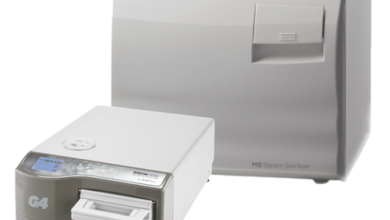In the world of industrial automation, connectors play a crucial role in ensuring seamless communication between devices and systems. Two popular types of connectors used in industrial applications are M8 and M16 connectors. While both connectors share some similarities, they also have distinct differences that set them apart. In this article, we will explore the key differences between M8 and M16 connectors, helping you make informed decisions when selecting the right connector for your industrial automation needs.
Size and Design
One of the most noticeable differences between M8 and m8 connector is their size. M8 connectors, also known as 8mm connectors, have a smaller diameter and are more compact than M16 connectors. M16 connectors, on the other hand, have a larger diameter and are often used in applications where more power or data transmission is required. The design of the connectors also differs, with M8 connectors typically having a more streamlined design and M16 connectors having a more robust and rugged design.

Number of Pins and Contacts
Another key difference between M8 and M16 connectors is the number of pins and contacts they offer. M8 connectors typically have 3, 4, or 5 pins, while M16 connectors can have up to 24 pins. This means that M16 connectors can transmit more data and power than M8 connectors, making them suitable for more complex applications. Additionally, M16 connectors often have more contacts, which provide a more secure connection and reduce the risk of signal loss or interference.
Shielding and Protection
M8 and M16 connectors also differ in terms of shielding and protection. M16 connectors often have a shielded design, which provides protection against electromagnetic interference (EMI) and radio-frequency interference (RFI). This makes them suitable for applications where data transmission is critical and interference cannot be tolerated. M8 connectors, on the other hand, may not have shielding, making them more susceptible to interference.
Applications and Industries
The applications and industries that use M8 and M16 connectors also differ. M8 connectors are commonly used in robotics, machine tools, and process control systems, where compact size and reliable data transmission are critical. M16 connectors, on the other hand, are often used in more demanding applications, such as industrial networking, power distribution, and heavy machinery. They are also used in industries such as aerospace, defense, and medical, where high-reliability and high-performance connectors are required.
Environmental Protection
M8 and M16 connectors also have different levels of environmental protection. M16 connectors often have a higher level of protection against dust, water, and other environmental factors, with some connectors having an IP69K rating. M8 connectors, on the other hand, may have a lower level of protection, with some connectors having an IP67 rating. This means that M16 connectors can withstand harsher environments and are suitable for use in outdoor or industrial applications.
What are M8 and M16 Connectors?
M8 and M16 connectors are circular connectors that are designed to provide a secure and reliable connection between devices. The “M” in M8 and M16 refers to the metric thread size of the connector. M8 connectors have a thread size of 8mm, while M16 connectors have a thread size of 16mm. These connectors are typically used in industrial environments where a high level of reliability and durability is required. They are resistant to vibration, moisture, and extreme temperatures, making them ideal for use in harsh environments.
Pin Configuration of M8 Connectors
M8 connectors typically have 3, 4, or 5 pins, depending on the specific application. The pin configuration of an M8 connector is usually represented by a diagram or a table that shows the pin assignment. The most common pin configuration for an M8 connector is the 4-pin configuration, which consists of two signal pins, one power pin, and one ground pin. The signal pins are usually assigned to the outer pins, while the power and ground pins are assigned to the inner pins. The pin configuration of an M8 connector can vary depending on the specific application, so it’s essential to consult the manufacturer’s documentation or a wiring diagram to ensure proper connection.
Pin Configuration of M16 Connectors
M16 connectors typically have 5, 6, or 7 pins, depending on the specific application. The pin configuration of an M16 connector is similar to that of an M8 connector, with the signal pins assigned to the outer pins and the power and ground pins assigned to the inner pins. However, M16 connectors often have additional pins that are used for shielding or other purposes. The pin configuration of an M16 connector can also vary depending on the specific application, so it’s essential to consult the manufacturer’s documentation or a wiring diagram to ensure proper connection.
Differences between M8 and M16 Connectors
The main difference between M8 and M16 connectors is the size of the connector and the number of pins. M8 connectors are smaller and have fewer pins than M16 connectors. M8 connectors are typically used in applications where space is limited, such as in sensors and actuators. M16 connectors, on the other hand, are often used in applications where a higher level of reliability and durability is required, such as in control systems and industrial automation equipment. Another difference between M8 and M16 connectors is the level of shielding provided. M16 connectors often have additional shielding to protect against electromagnetic interference (EMI), while M8 connectors may not have shielding.

Applications of M8 and M16 Connectors
M8 and M16 connectors are widely used in various industrial applications, including sensors, actuators, control systems, and industrial automation equipment. They are also used in medical devices, aerospace equipment, and other applications where reliability and durability are critical. M8 connectors are often used in applications where space is limited, such as in robotic systems and machine vision systems. M16 connectors, on the other hand, are often used in applications where a higher level of reliability and durability is required, such as in power generation and distribution systems.
Cost and Availability
Finally, the cost and availability of M8 and M16 connectors differ. M8 connectors are generally less expensive than M16 connectors, making them a more cost-effective option for applications where budget is a concern. M16 connectors, on the other hand, are often more expensive due to their larger size, more complex design, and higher level of shielding and protection. Additionally, M16 connectors may be less widely available than M8 connectors, making them more difficult to source.
Conclusion
In conclusion, while M8 and M16 connectors share some similarities, they have distinct differences that set them apart. M8 connectors are smaller, more compact, and less expensive, making them suitable for applications where size and budget are a concern. M16 connectors, on the other hand, are larger, more robust, and offer more pins and contacts, making them suitable for more complex applications where high-reliability and high-performance are required. By understanding the key differences between M8 and M16 connectors, you can make informed decisions when selecting the right connector for your industrial automation needs.



